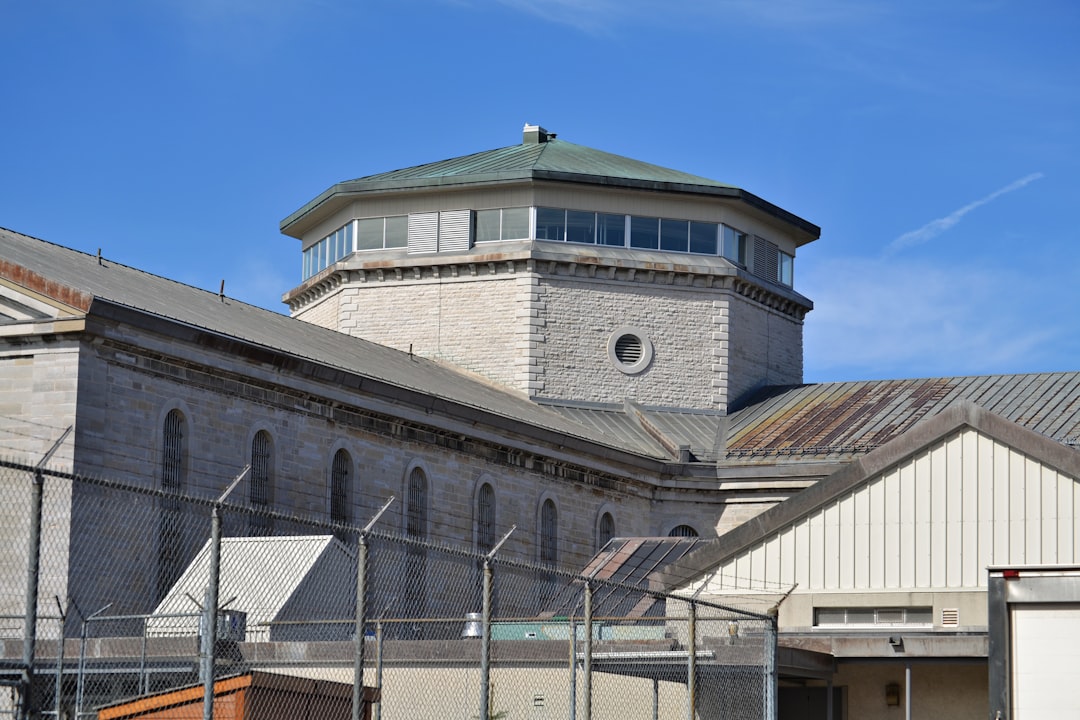The Groundbreaking Vote That Shocked the World

On November 6, 2012, something unprecedented happened that would ripple across America and beyond. Colorado and Washington State voters made history by replacing marijuana prohibition with legalization and regulation for adults over 21. But Colorado wasn’t just following a trend – it was creating one. Amendment 64 was enacted into law by 55% of the voters of Colorado and went into effect December 10, 2012. This wasn’t some small-scale experiment either. The measure passed on November 6, 2012, and along with a similar measure in Washington state, marked “an electoral first not only for America but for the world”. That night, while the rest of the nation debated traditional political issues, Colorado quietly revolutionized drug policy forever. What happened next would prove that sometimes the most radical changes come from the most unexpected places.
A Domino Effect Across America

In the decade since, other states followed suit, bringing the number of adult-use legalization states to 24 — home to 52% of the U.S. population. Think about that for a moment – more than half of all Americans now live in states where recreational marijuana is legal. As of November 2024, the following 24 states have legalized the recreational use of marijuana: Alaska, Arizona, California, Colorado, Connecticut, Delaware, Illinois, Maine, Maryland, Massachusetts, Michigan, Minnesota, Missouri, Montana, Nevada, New Jersey, New Mexico, New York, Ohio, Oregon, Rhode Island, Vermont, Virginia, and Washington, and the District of Columbia. Colorado didn’t just change its own laws – it sparked a nationwide movement. The state became the laboratory where the rest of America could watch and learn. Every success, every challenge, every unexpected outcome in Colorado became a data point for other states considering their own legislation.
The Tax Revenue Reality Check

Let’s talk money, because that’s what grabbed everyone’s attention first. The state has collected more than $2.3 billion in marijuana taxes since legal recreational sales began in 2014. But here’s where it gets interesting – and where Colorado taught America some hard truths about cannabis economics. In 2023, the state collected over $274 million in revenue compared with over $325 million in 2022 and an all-time high of $423 million in 2021. The golden goose wasn’t laying eggs forever. Last fiscal year, Colorado only got $282 million in tax revenue from cannabis sales, down from $425 million in 2020-21. What Colorado discovered, and what other states are now learning, is that marijuana markets mature and stabilize – they don’t just keep growing indefinitely.
The Price Drop Nobody Saw Coming

For instance, marijuana prices in Colorado dropped 60% from 2014 to 2023. This wasn’t a small dip – this was a market correction that nobody fully anticipated. Prices quickly flipped and became the cheapest they have been in several years — around 63% lower — between 2021 and April 2023 when restrictions began to lift and demand started to go down again. Colorado became the cautionary tale about supply and demand in emerging markets. When you legalize something that was previously scarce and expensive, basic economics kicks in hard. Marijuana prices and sales dropped rapidly in the latter half of 2022 and all of 2023, after record-breaking sales during the COVID-19 pandemic. The state that pioneered legal weed was now pioneering the challenges of a saturated market.
Crime Rates: Shattering the Fear-Mongering

Remember all those dire predictions about crime waves and social chaos? Colorado proved most of them wrong. The total number of marijuana arrests decreased by 68% between 2012 and 2019, from 13,225 to 4,290. That’s not just a small reduction – that’s a fundamental shift in how law enforcement operates. “Many social ills that opponents warned about a decade ago have not come to pass,” said Brian Keegan, an assistant professor in the Department of Information science who uses data to analyze both the chemical makeup of cannabis and the evolution of the industry. “DUIs and crime did not explode following legalization”. Colorado became living proof that the criminal justice system could function differently. The resources previously spent on marijuana enforcement could be redirected to more serious crimes.
Youth Usage: The Surprising Truth

Here’s where Colorado really surprised the experts. According to the most comprehensive study on teen cannabis use in Colorado, teen use has decreased since cannabis became legal: In 2011, 22% of teens reported used, compare to 13.3% in 2021. Let that sink in – legalization actually correlated with decreased youth usage. As director of the National Institute on Drug Abuse Nora Volkow testified in the U.S. Senate, “legalization by some states of marijuana has not been associated with an increase in adolescents’ marijuana use.” The most in-depth survey in Washington suggests significant decreases in current cannabis use for every grade surveyed — 6th, 8th, 10th, and 12th graders. Colorado demolished one of the biggest arguments against legalization. Taking marijuana out of the black market and regulating it like alcohol seemed to make it less accessible to kids, not more.
The Hospital Emergency Room Reality

But Colorado’s story isn’t all sunshine and tax revenue. The state became a real-time case study in the unintended consequences of legalization. The yearly number of emergency department visits related to marijuana increased 54 percent after the legalization of recreational marijuana (2013 compared to 2017). This wasn’t just about people getting too high – it was about inexperienced users encountering products far more potent than anything they’d tried before. Colorado has experienced a five-fold greater prevalence of mental health diagnoses in Emergency Department (ED) visits associated with cannabis use between 2012 and 2014. There has also been a significant increase in adolescent cannabis-associated ED and urgent care visits experienced at Colorado children’s hospital from 2005 to 2015, resulting in 4202 episodes of care. Colorado learned that legalization meant taking responsibility for public health in ways the black market never had to.
Global Ripple Effects Beyond America

Our historic work has made headlines across the world – from Japan to India to Belize. Colorado’s decision didn’t just influence American drug policy – it became a global case study. The outcome is nevertheless expected to have broad impacts south of the border, including in Mexico where less than a week after the U.S. vote Mexican senators submitted a proposal to legalize marijuana in their country. Think about that timing – within a week of Colorado’s vote, international legislators were drafting their own bills. Colorado proved that drug prohibition wasn’t inevitable or unchangeable. Countries around the world began studying Colorado’s data, learning from its mistakes, and adapting its successes to their own contexts.
The Banking Nightmare That Changed Finance

Here’s something most people don’t realize: Colorado’s marijuana businesses couldn’t use banks. Due to federal regulations, cannabis-related businesses often face severe banking restrictions. Many operate on a cash-only basis, which can increase the risk of theft and liability. Imagine running a multi-million-dollar business entirely in cash because federal law still classified your product as illegal. Colorado companies became pioneers in financial creativity, developing security systems and cash management protocols that other industries now study. How marijuana is taxed is complex – and that complexity forced innovations in tax collection, business operations, and regulatory oversight that extended far beyond cannabis.
Educational Funding: The Promise vs Reality

The short answer is marijuana tax collections are small compared to the state’s education budget. It’s a large number, but just a fraction of the state’s overall budget. This was perhaps Colorado’s most important lesson about realistic expectations. Only around 1% of Colorado’s total education budget comes from marijuana tax revenue. According to the Colorado Department of Education, the money is directed to a variety of programs including school construction, bullying prevention, and behavioral health. According to the report, about $60 million of marijuana-related tax revenue was directed toward public school construction, while another $25 million went toward the State Public School Fund. Colorado taught other states that cannabis taxes were helpful, but they weren’t going to solve budget crises or revolutionize public education funding.
The Workplace Revolution Nobody Talks About

Employment in the marijuana industry is a relatively small share of total employment in Colorado, but in recent years it has been one of the state’s fastest-growing industries. As of February 2018, employment in the marijuana industry made up 0.7 percent of total employment in the state assuming that each active license translates into 0.467 full-time jobs, up from 0.1 percent in 2014. But here’s what’s fascinating – Colorado created an entirely new category of legitimate employment. Economists found legalization was associated with fewer workers compensation claims, which indicates fewer injuries and disabilities. People moved from dangerous black market operations to regulated, safe working environments. Colorado demonstrated that legalization wasn’t just about personal freedom – it was about creating legitimate economic opportunities and safer workplaces.
Traffic Safety: The Mixed Results

The traffic safety data from Colorado tells a complex story that defies simple narratives. Since recreational marijuana was legalized, traffic deaths where drivers tested positive for marijuana increased 138% while all Colorado traffic deaths increased 29%. Since recreational marijuana was legalized, traffic deaths involving drivers who tested positive for marijuana more than doubled from 55 in 2013 to 131 people killed in 2020. These numbers sound alarming, but there’s more to the story. The increase in law enforcement officers who are trained in recognizing drug use, from 129 in 2012 to 221 in 2020, can increase drug detection rates apart from any changes in driver behavior. Colorado discovered that better testing and detection could make problems appear to grow even when actual behavior might not have changed significantly. The state became a testing ground for new approaches to impaired driving enforcement.
Setting the Stage for Federal Change

Colorado’s bold move in 2012 set the stage for conversations that are happening in Washington D.C. right now. On May 21, 2024, the U.S. Department of Justice Drug Enforcement Administration (DEA) published a notice of proposed rulemaking to transfer marijuana from Schedule I to Schedule III under the Controlled Substances Act. None of this federal momentum would exist without Colorado proving that legalization could work. The state became the proof of concept that federal lawmakers needed to see. Every study, every statistic, every success and failure in Colorado became ammunition for broader policy debates. We must prove to the rest of the country and the world that regulating marijuana like alcohol works – and Colorado took on that burden willingly.
The Modern Market Maturation

Today, the once-underground endeavor is a $2 billion per year industry in Colorado, and research on its chemical makeup, health benefits and risks is flourishing at institutions around the country. But the recent market trends tell a sobering story about industry maturation. Colorado marijuana sales started off cold in 2024, reaching just under $115.4 million in January, according to recently revised numbers from the state Department of Revenue. January’s sales figure represents a slight dip from the $115.8 million collected by dispensaries in December of last year, and around 11 percent less than January 2023’s $129.4 million in pot sales. It’s also the lowest total Colorado dispensaries have seen in January since 2017 — and nearly 49 percent lower than January 2021’s record $187.6 million. Colorado is teaching other states what market saturation looks like in real time. The initial boom was never sustainable, and now the industry is finding its actual long-term equilibrium.
Colorado didn’t just change its own laws in 2012 – it changed the entire conversation about drug policy in America and beyond. From proving that legalization wouldn’t lead to social chaos to demonstrating the complexities of regulating a previously illegal market, Colorado became the nation’s laboratory. The state showed that marijuana legalization could work, but it also revealed that it wasn’t a magic solution to budget problems or social issues. Most importantly, Colorado proved that change was possible, even on issues that seemed politically impossible. Today, as more than half of Americans live in states with legal recreational marijuana, they have Colorado’s decade-plus experiment to thank for showing the way. What started as one state’s bold decision became a blueprint for transforming drug policy across an entire nation. Who would have thought that a Rocky Mountain state would lead a revolution that’s still unfolding today?







